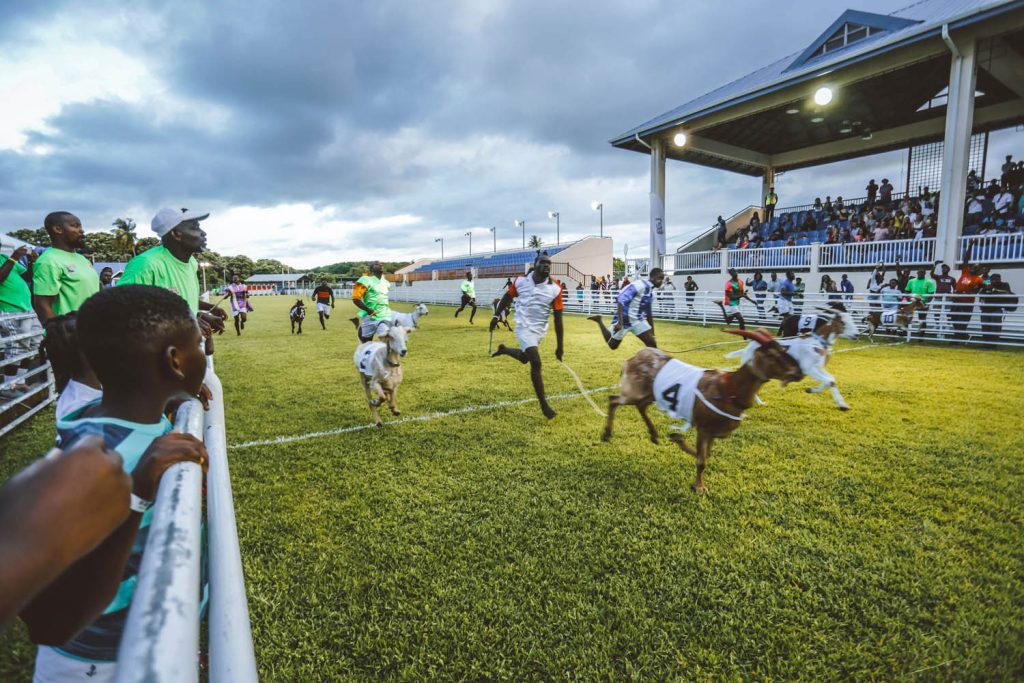Giselle Laronde-West takes us inside some of her favourite Caribbean traditions at Easter time — including some of the most unusual!
The Easter weekend — a long weekend with public holidays in many parts of the Caribbean — is a delightful time across the region, with activities and traditions that excite the young and the young at heart.
In my home country, Trinidad & Tobago, an unusual tradition is the beating of the “bobolee” on Good Friday. The effigies — human-sized, stuffed caricatures — are created by members of the community, and hung or tied to a pole for all to see until time for the deed to be done. These bobolees typically represent (and resemble) people that community members do not respect, or who they feel have betrayed them. The original bobolee, of course, was Judas Iscariot. The bobolees are eventually beaten or burned in public spaces.
Over in Tobago, goat and crab racing — held on the Tuesday after Easter in Buccoo Village — is a tradition that began as the “poor man’s version” of horse-racing in the early 1900s. Large crowds of locals and visitors look forward to this event where they can cheer on their favourite goat. The runners or trainers, who run alongside the goats, train hard with their charges all year in the hope of goat racing supremacy. As a bonus, crab races follow, where participants (including children) — equipped with a thin stick — gently nudge the crabs toward the finish line … with many of the crabs end up running in totally different directions!
Barbados has its own unique tradition: the bleeding of the Physic Nut Tree. The red sap which oozes from the tree’s bark when stuck on Good Friday symbolises the blood of Christ. This tradition involves making a small incision in the trunk of the tree and collecting the sap, which is usually applied to the skin, as it is believed that it is a traditional remedy for some skin conditions and a variety of ailments like arthritis and rheumatism.
The most common and popular Easter tradition in many Caribbean countries is kite-flying. Families and friends come together to design and make beautiful, colourful kites of various shapes, patterns, and sizes, and head to the parks, beaches, or any open space to show them off as they dance in the winds that are brisk and vigorous at this time of year. Some kites are made into unique shapes — like lions, ships and dragons.
Another hallmark of Eastertime? Delicious hot cross buns. These are spiced, sweet buns bearing the symbolic cross in white icing sugar. No Caribbean Easter celebration would be complete without them. In Jamaica, they are often made with nutmeg and cinnamon, and include raisins, currants, or mixed peel. In Trinidad & Tobago, they may be made with coconut milk, or grated coconut and spices. Some other islands adjust the recipe to include molasses, ginger, and even rum. Enjoy it plain, with some butter or cheese — and maybe a cup of hot local or regional cocoa.
Easter hat or bonnet competitions are also hugely popular — at schools, churches, and in larger community settings — while Easter egg hunts are a favourite at family gatherings, either at home or in parks. Some families also do egg rolling competitions — boiling and painting eggs, then having the children compete by going to the top of a hill and rolling their eggs down the slope. The person whose egg reaches the bottom first — most intact — wins.
A special experience in Curaçao is the Seú Harvest Easter Parade, which usually takes place early in the afternoon on Easter Monday. It is a spectacular display of creativity and craftsmanship by the locals who showcase their elaborately decorated floats through the streets of Willemstad, the capital, to the sounds of local marching bands, accompanied by dance groups and other cultural organisations.
Happy Easter!

